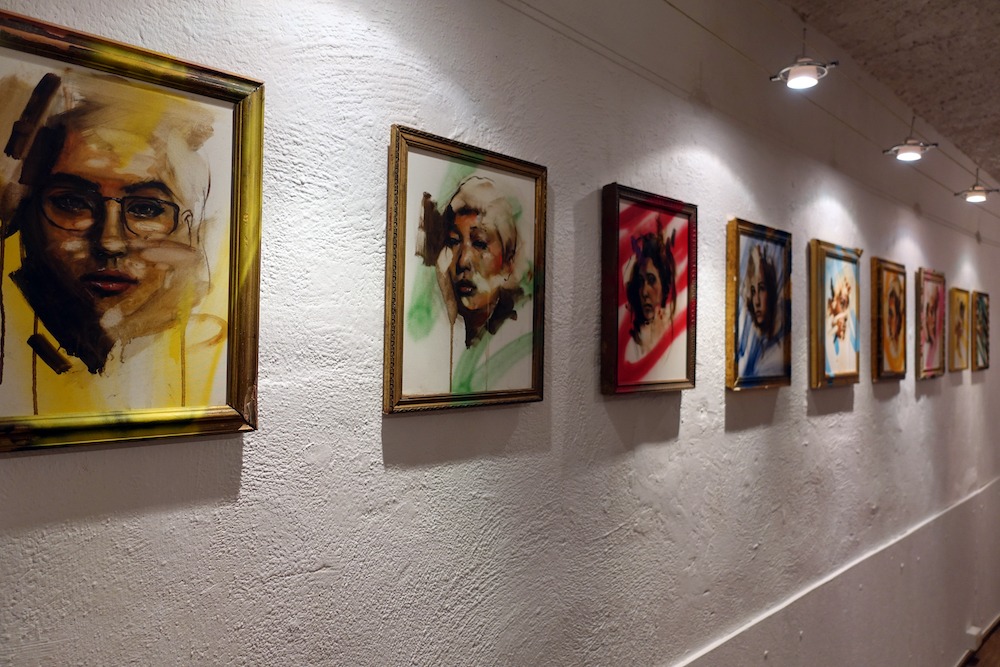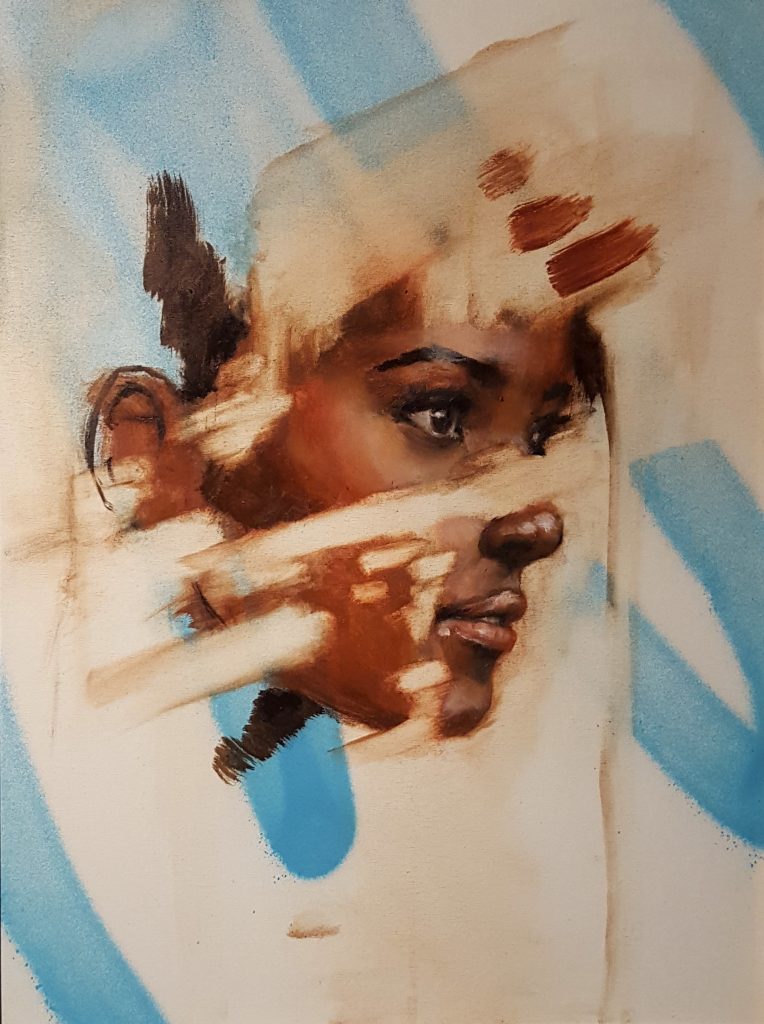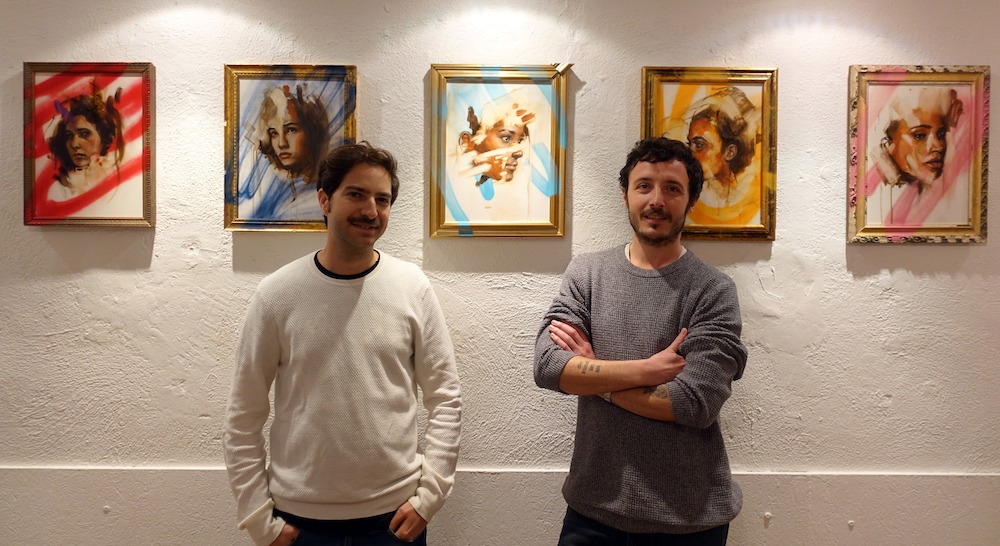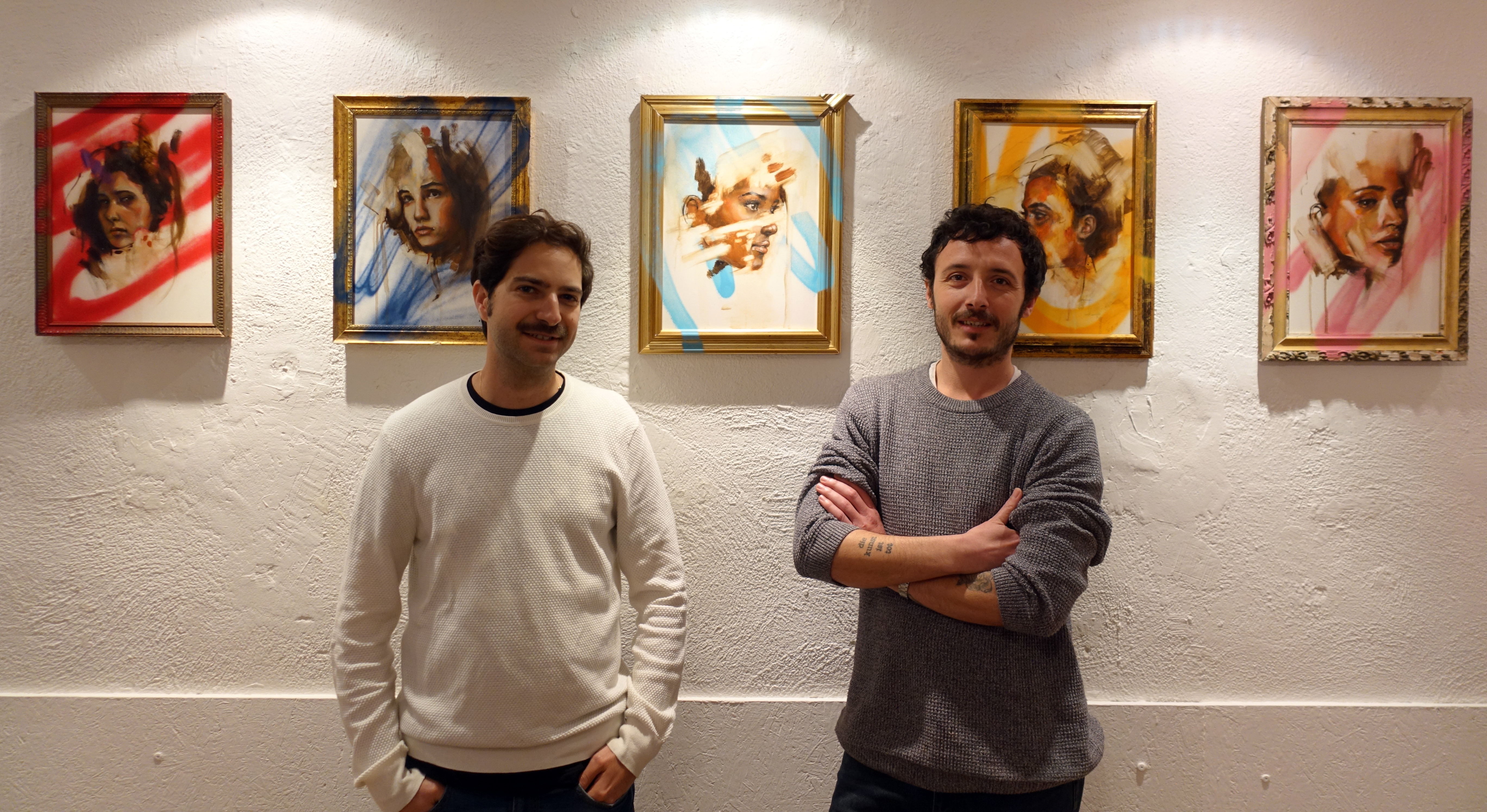
Ferdinando Sorgente
Women (2019)
Installation view
Courtesy of the artist and 1Opera Gallery, Napoli
How did you begin your life as an artist?
Together with my twin brother, I took my first steps in the field of art with writing, as a form of ‘rebellion’ at the age of 12-13. I come from Ponticelli, a tough neighborhood on the outskirts of Napoli where it is difficult to find one’s own way, but it was in school that I understood what I wanted to do. I started studying to learn more about where I live; I started learning different artistic forms from artists such as Francesco Solimena, Gian Lorenzo Bernini, Marcel Duchamp, and most recently Ernesto Tatafiore, Pietro’s father.
Tell us about the Women solo.
After the child, the woman is an essential figure in art because she represents purity without differences in race and/or color. I wanted to represent her because not only is her beauty is important, but something more. Behind every work, I like the idea that there is always a color that represents it, which is why the title of each work is a color. It is no coincidence that many paintings and sculptures in the history of art represent women.
How are your works born?
I use spray and oil and I am inspired by my intuition, but also by the faces of my friends. In my art, there is a discourse that takes up the classic and the contemporary. In each work, first I use the spray and the oil, and then I use all colors; I really like yellows, blues and pinks. I use frames bought at flea markets, sometimes broken, because I like that sense of ancient, classic, between past and present. I studied art, but I also follow the laboratories of some painters to better understand the tools of the trade. Suffice it to say, until photography was invented, figurative work was the only way to convey something from an illustrative point of view.

Ferdinando Sorgente
(From left to right) Red, Yellow, Blue, Green (2019)
Installation view
Courtesy of the artist and 1Opera Gallery, Napoli
How did the collaboration with Pietro Tatafiore come about?
We have been friends for a long time and so the idea was born to create a personal exhibition dedicated to the female figure; which, unfortunately in 2019, is still very difficult to fully establish in societies around the world.

Ferdinando Sorgente
Women (Untitled), 2019
Mixed media on canvas
Courtesy of the artist and 1Opera Gallery, Napoli
Pietro, can you tell us a bit about the gallery’s history?
The space was born six years ago. [Tatefiore divides his time between two great passions: art and fishing.] It’s called 1Opera because the Neapolitan art dealer Lucio Amelio exhibited artwork in a small gallery, and by chance I found this space that required a great deal of renovations. I am a young gallery owner and since 2005, I’ve proposed comparisons between generations to enrich both experts and visitors, alike.
It’s important to be open to dialogue and to understand what surrounds us, even with the artists in their first experiences. My research is based precisely on confrontation, and it is important to invest despite the particular historical period. With Ferdinando, we found ourselves. We chose ourselves.
Ferdinando, what are your future projects?
Currently, I teach street art and graffiti in cooperative and in public schools, and then with my colleague, sculptor Vittorio Polverino, we opened Pro Art last March. It’s an art workshop open to all those who want to learn or to improve in drawing, sculpture and painting, Napoli is a city that can give opportunities, as it was for me.

(L) Pietro Tatafiore and (R) Ferdinando Sorgente at 1Opera Gallery, Napoli
1Opera Gallery has exhibited, among others, Shepard Fairey, Raul 33, Silvia Camporesi and Allen Jones, and is located in the Palazzo Diomede Carafa, one of the monumental palaces of the fifteenth century and among the most important in Napoli.
Per Frontrunner
